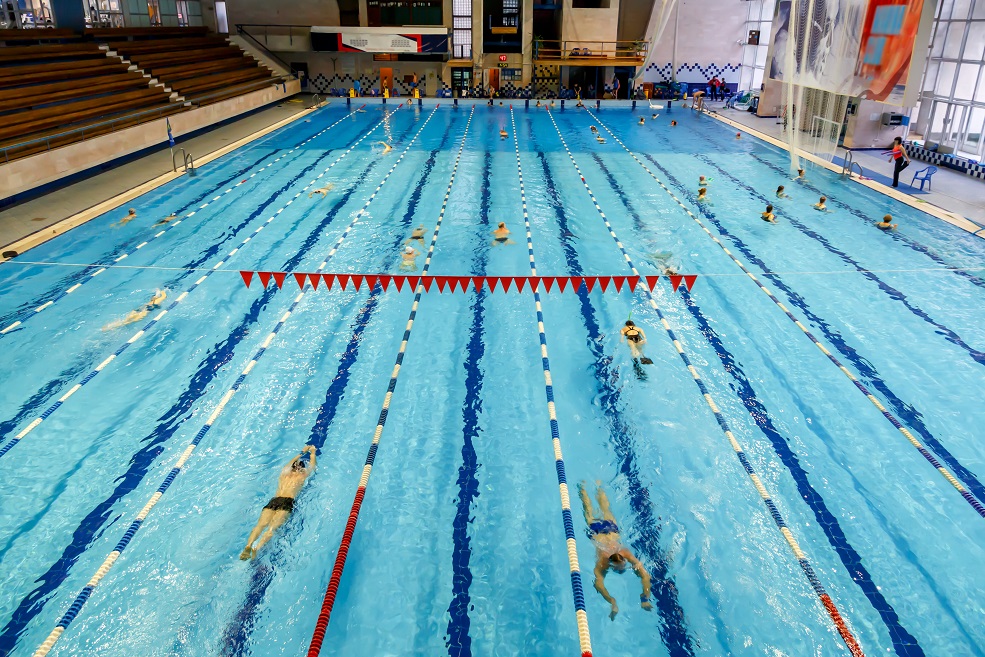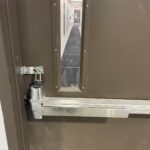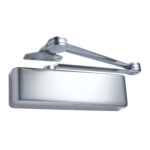 Back in 2015, I wrote about a somewhat confusing exception in the IBC that addressed the mounting height of operable hardware on doors and gates serving swimming pools. Unfortunately, this exception still exists in the 2021 edition of the IBC, BUT – there is progress. You may not spend a lot of time perusing the International Swimming Pool and Spa Code (ISPSC), but the 2021 edition includes changes that help to clarify the intent of the requirements.
Back in 2015, I wrote about a somewhat confusing exception in the IBC that addressed the mounting height of operable hardware on doors and gates serving swimming pools. Unfortunately, this exception still exists in the 2021 edition of the IBC, BUT – there is progress. You may not spend a lot of time perusing the International Swimming Pool and Spa Code (ISPSC), but the 2021 edition includes changes that help to clarify the intent of the requirements.
Here is the IBC section on the mounting height for operable hardware, and the exception related to swimming pool doors and gates:
1010.2.3 Hardware height. Door handles, pulls, latches, locks and other operating devices shall be installed 34 inches (864 mm) minimum and 48 inches (1219 mm) maximum above the finished floor. Locks used only for security purposes and not used for normal operation are
permitted at any height.
Exception: Access doors or gates in barrier walls and fences protecting pools, spas and hot tubs shall be permitted to have operable parts of the latch release on self-latching devices at 54 inches (1370 mm) maximum above the finished floor or ground, provided that the self-latching devices are not also self-locking devices operated by means of a key, electronic opener or integral combination lock.
In a nutshell, this section requires operable hardware to be mounted between 34 and 48 inches above the floor (this varies in some states), but allows hardware to be mounted up to 54 inches AFF if the pool door or gate is not self-locking. If the pool door or gate IS self-locking and requires a key 0r access control credential to enter, the hardware must be mounted at the standard height of 34-48 inches AFF. I confirmed this with ICC staff when I wrote the previous post.
In the 2021 edition of the ISPSC, several changes were made to Section 305.3 – Doors and Gates, with the intent of deterring access for unaccompanied children. Some of these changes address the doors and gates themselves, for example:
- Doors and gates must be self-closing and outswinging (swinging away from the pool).
- Self-latching doors and gates are required – pairs may have one leaf that is bolted or fixed and one self-latching leaf.
- No openings of more than 1/2 inch are allowed within 18 inches of the latch (to keep kids from sticking their fingers through and operating the hardware).
- Service doors in the pool area must be locked when the room is not in use.
- Equipment room doors must have an “automatic closer” and an “automatic lock” (a door closer without a hold-open mechanism, and a storeroom function lockset).
With regard to the operable hardware, the Latch Release section has been modified for clarity:
305.3.3 Latch release. For doors and gates in barriers, the door and gate latch release mechanisms shall be in accordance with the following:
1. Where door and gate latch release mechanisms are accessed from the outside of the barrier and are not of the self-locking type, such mechanism shall be located above the finished floor or ground surface in accordance with the following:
….1.1. At public pools and spas, not less than 52 inches (1219 mm) and not greater than 54 inches (1372 mm).
….1.2. At residential pools and spas, not less 54 inches (1372 mm).
2. Where door and gate latch release mechanisms are of the self-locking type such as where the lock is operated by means of a key, an electronic opener or the entry of a combination into an integral combination lock, the lock operation control and the latch release mechanism shall be located above the finished floor or ground surface in accordance with the following:
….2.1. At public pools and spas, not less than 34 inches and not greater than 48 inches (1219 mm).
….2.2. At residential pools and spas, at not greater than 54 inches (1372 mm).
3. At private pools, where the only latch release mechanism of a self-latching device for a gate is located on the pool and spa side of the barrier, the release mechanism shall be located at a point that is at least 3 inches (76 mm) below the top of the gate.
The allowable mounting height for the hardware depends on a) whether the door or gate is always locked or can be left unlocked, and b) whether the door is serving a public pool, residential pool, or private pool.
- Self-Locking Doors/Gates
- Public Pools/Spas – 34-48 inches AFF
- Residential Pools/Spas – not greater than 54 inches AFF
- Non-Self-Locking Doors/Gates:
- Public Pools/Spas – 52-54 inches AFF
- Residential Pools/Spas – not less than 54 inches AFF
- Private Pools/Spas – release mechanism at least 3 inches below top of gate on pool side
Make sense? One more thing to keep in mind…pool gates often require panic hardware because pools are usually considered assembly occupancies, and depending on the size of the pool and the pool deck, the occupant load may be more than 50 (for the IBC) or more than 100 (for NFPA 101).
You need to login or register to bookmark/favorite this content.





I understand this relating to inside the pool to get out, but what about from the outside of the pool? If it’s relocking, but always free egress (i.e. electric strike or lever panic hardware), can they both be mounted at the higher height, or does the lever still have to be mounted at the lower height regardless?
Hi Krystina –
If the door is self-closing, self-latching, and self-locking, the hardware on both sides would be mounted at the normal height – 34-48 inches AFF.
– Lori
I did not do the occupancy calculation but both my kid were on swim teams. I can tell you that it is shoulder to shoulder behind the starting blocks. The rest of the teams are in the pool area cheering on their teammates. The exits need to have exit devices. The exit devices and the moving parts must be protected from corrosion. I have seen 32D hardware with surface rust.
What are the ADA restrictions on gate latches for public swimming pools?